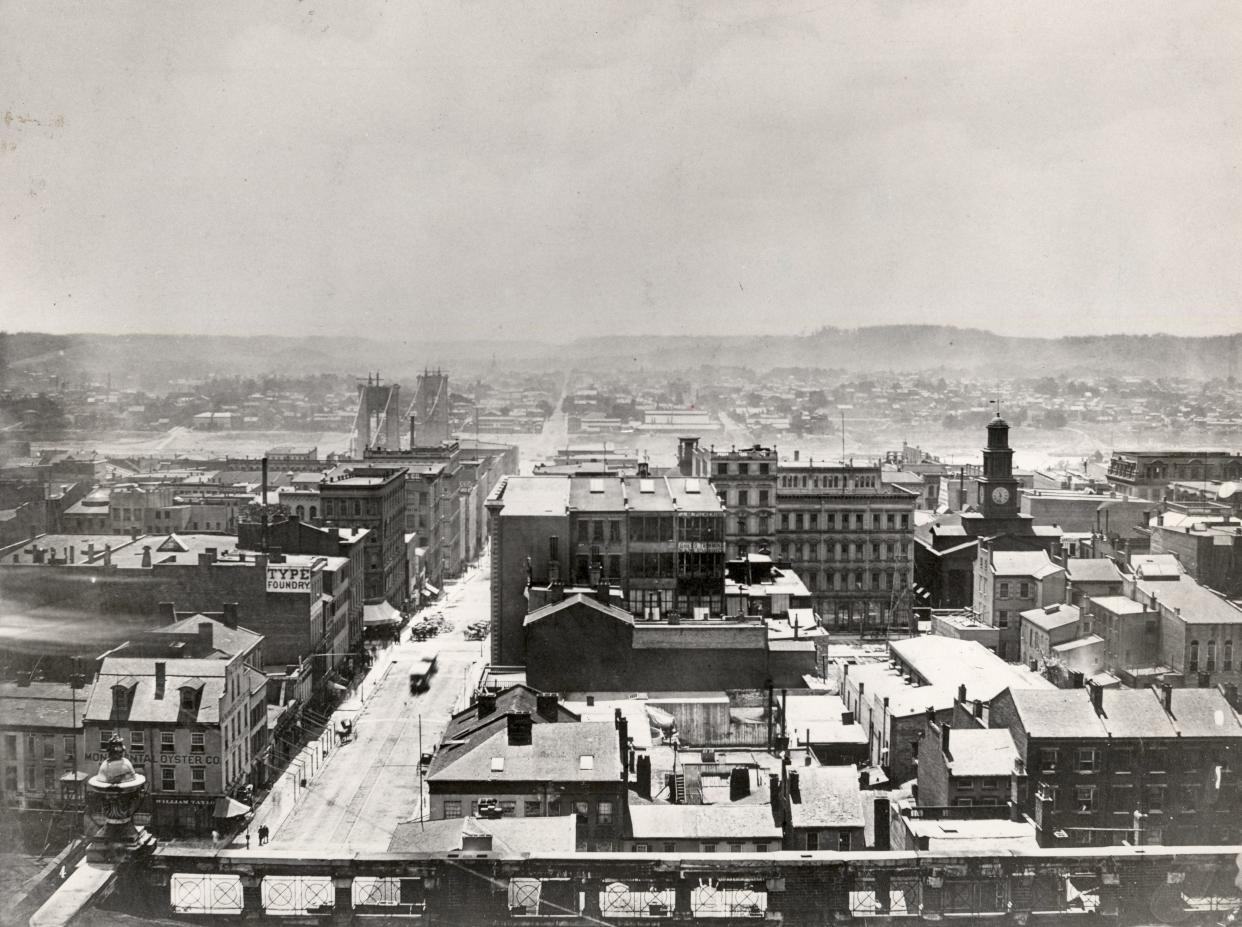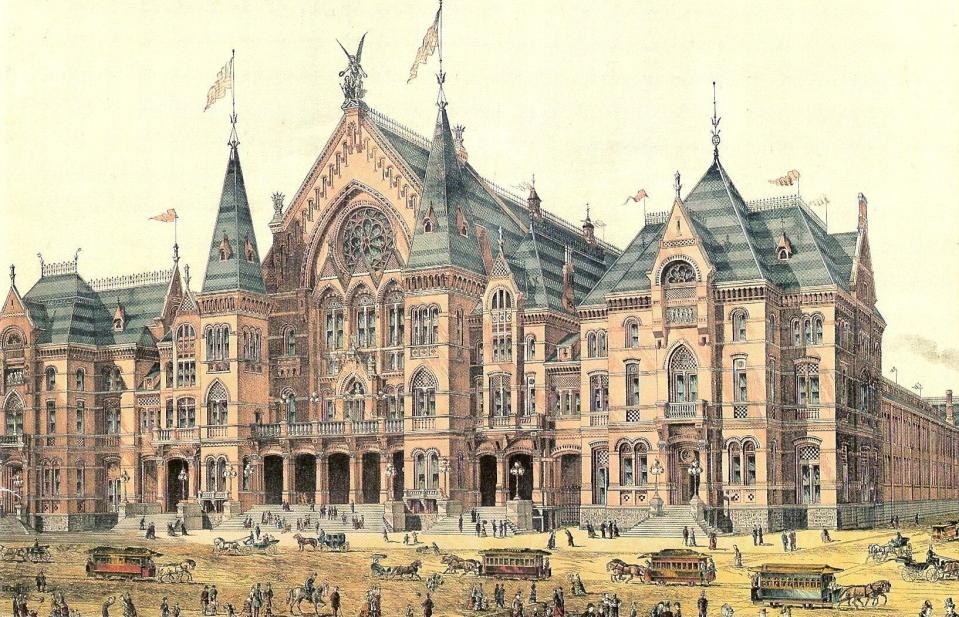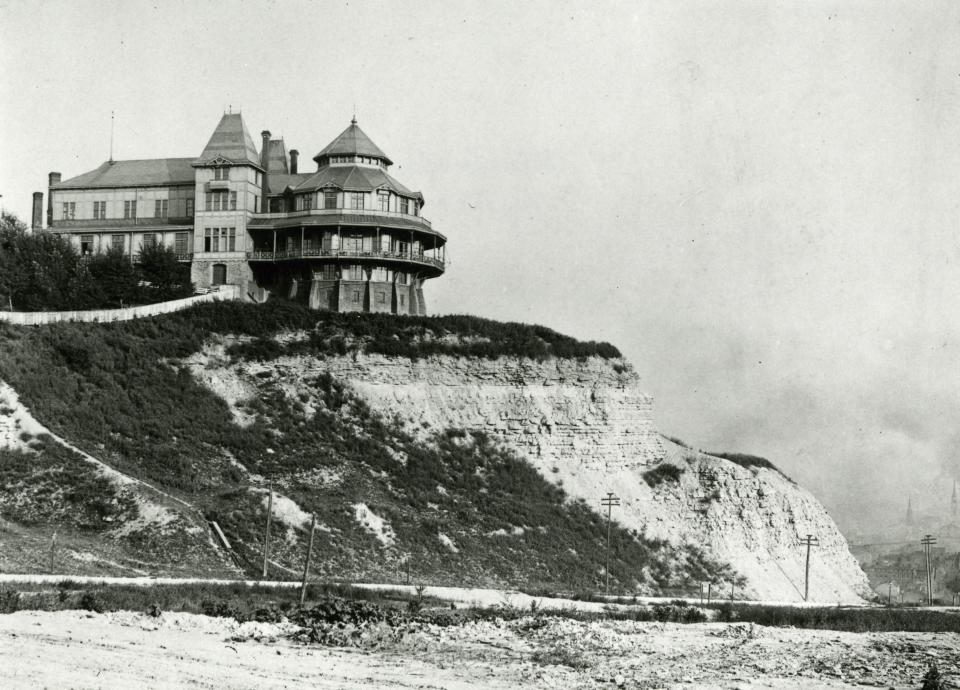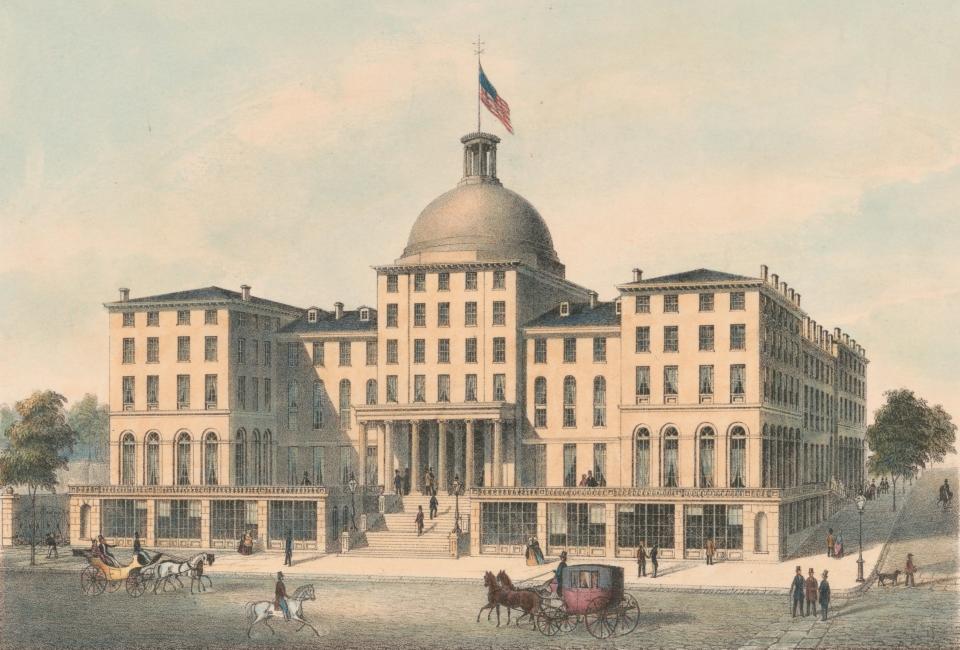What was it like to live in Cincinnati in the 1870s? Let's travel back in time

- Oops!Something went wrong.Please try again later.
If I could travel back in time, when would I go to visit?
Recently, I reread a favorite novel, “Time and Again” by Jack Finney (published in 1970), in which a man uses self-hypnosis and environmental reenactment to transport himself into the past. He took up a room in New York City’s historic Dakota building overlooking Central Park, which was relatively unchanged since the 1800s, and found himself back in 1882. (The 1980 film “Somewhere in Time” uses a similar time-travel method.)
The book got me thinking of what time in Cincinnati’s history I would have liked to experience.
For this imaginative exercise using the novel’s time-travel concept, I gave myself parameters that I could visit to observe and not interfere with history. Would I want to be there when the first settlers pulled their flatboats ashore on Dec. 28, 1788? Or watch the 1869 Red Stockings play?
Our History: At 6 mph, a ride on Pittsburgh’s historic incline shows what Cincinnati used to have
A ticket to the opening of Music Hall
I settled on an event – the opening of Music Hall on May 14, 1878.
For one, the historic venue is still around and would be my gateway between the two time periods.
On that day, I could blend into the crowd to witness Samuel Hannaford’s masterpiece in its newborn glory (and prove once and for all that despite early art renderings, there was never an angel figure atop the Music Hall roof).

Outside, I could hear the clip-clop of horse-drawn carriages on the cobblestone streets and see Gilded Age men in top hats and frock coats, and women draped in bustle skirts and flowered bonnets.
For $2, I could get a ticket for the first concert of the third May Festival. Seated in the enormous auditorium, bathed in orange gas-jet lighting, I’d admire the interior’s decorative flourishes and the artistry of the wood-carved panels of the original organ onstage. During the dedication ceremonies, I’d join the 8,000 music lovers to give a rousing ovation to Reuben Springer, the benefactor who proposed and halfway funded the building of Music Hall.
Then, we’d hear the voices of the May Festival Chorus ring out and, under the baton of maestro Theodore Thomas, present scenes from the opera “Alceste.”
Perhaps I would see Maria Longworth Nichols in her box seat. Bolstered by the success of the choral festival that she helped organize, could she already be dreaming up plans for her Rookwood Pottery, which she’d found in two years’ time?
Visiting the Queen City era
But I didn’t choose this time period just for Music Hall. While back in 1878, I could experience the rest of Cincinnati in what I refer to as its Queen City era, when it was one of the largest and most influential cities in America.
I could visit other Cincinnati icons in their original luster. Fountain Square, just seven years old, was transforming Fifth and Vine streets into the heart of the city, and the bronze Tyler Davidson Fountain would not yet have turned to its green patina. The John A. Roebling Suspension Bridge was still a marvel, the longest suspension bridge in the U.S. (1,057-foot span) until it would be surpassed by Roebling’s famous Brooklyn Bridge, completed by his son, Washington Roebling, in 1883.

But even more enticing would be the chance to visit remarkable buildings that are no longer around today. So perhaps another day or two in 1878 …
I could go to the then-new Main Library on Vine Street – which was just the Public Library then (no branches yet) – and view James W. McLaughlin’s magnificent main hall for myself, with sunlight streaming through the massive skylight as I peruse the four-story-tall iron bookshelves.
I could ride the Elm Street Inclined Plane (opened 1876) up to the crest of Clifton hills to take in the view of the city from the balconies of the ornate Bellevue House resort. Another attractive but lost design by McLaughlin, Bellevue House featured an octagonal dance pavilion where you could find German music accompanying German food and German beer. (The resort was closed about 1895 and was soon demolished.)
Or have lunch at Wielert’s Cafe on Vine Street in Over-the-Rhine (one of about 1,700 saloons in Cincinnati in 1878), where I might catch artist Henry Farny sketching the beer garden for a new edition of D.J. Kenny’s “Illustrated Guide to Cincinnati.”
Or maybe stroll along the bustling Public Landing, listening to the cadence of the dockworkers and the calliope whistles of the steamboats. (I would have just missed reporter Lafcadio Hearn, who often wrote about areas of town nobody else covered, but he moved to New Orleans in 1877. Oh, what a conversation that would have been.)
The Cincinnati building I most wish to have seen
Then I could spend the night at the Burnet House at Third and Vine streets, heralded as one of the best hotels in the world at the time. Along with the old Main Library, Burnet House is the Cincinnati structure I would most like to have seen in person.

The grand hotel designed by Isaiah Rogers was shaped as an H, with a tiered staircase that led to Ionic columns at the center entrance. The whole building was capped by a large dome, making it appear like a state capitol rather than a hotel. The interior was elegant with lace curtains, crimson velvet and green plush, gilt mirrors, gold and bronze chandeliers and marble mantels.
It was where everyone with means stayed when they visited Cincinnati – opera singer Jenny Lind, Oscar Wilde, Abraham Lincoln and Ulysses S. Grant. And perhaps a time traveler or two.
The past wasn’t all rosy
On my trip back in time to 1878, I would see more than buildings. I’d rub elbows with the people. Breathe the same air (which was so bad from black soot belched from factories and chimneys that the Cincinnati Observatory had recently moved away from Mount Adams because the astronomers couldn’t see the night sky). Smell the same smells (there were a lot of horses, and the new sewer system was not yet widespread, so outhouses were common all over town).
In “Time and Again,” time traveler Si Morley notices that the people looked different in 1880s New York. The same would be true in Cincinnati.
Every adult in 1878 had lived through the Civil War. Faces in the crowd could be spotted with smallpox scars. Women and minorities were without many of the rights that others take for granted. Cincinnati was a true melting pot with its diverse, ethnic population clumped together within the downtown basin.
I am sure the contradictions would be more apparent first-hand. The age of glorious architecture and the creativity of emerging culture would appear side by side with the grime and poverty of everyday life in the 19th century.
I might better appreciate opening my eyes and being back in 2024, recognizing that many elements of the Queen City era are still around while most other aspects of life and society are better now than they were then.
If you could travel back in time, when would you go to visit?
This article originally appeared on Cincinnati Enquirer: What was Cincinnati like in the 1870s? Let's travel back in time

